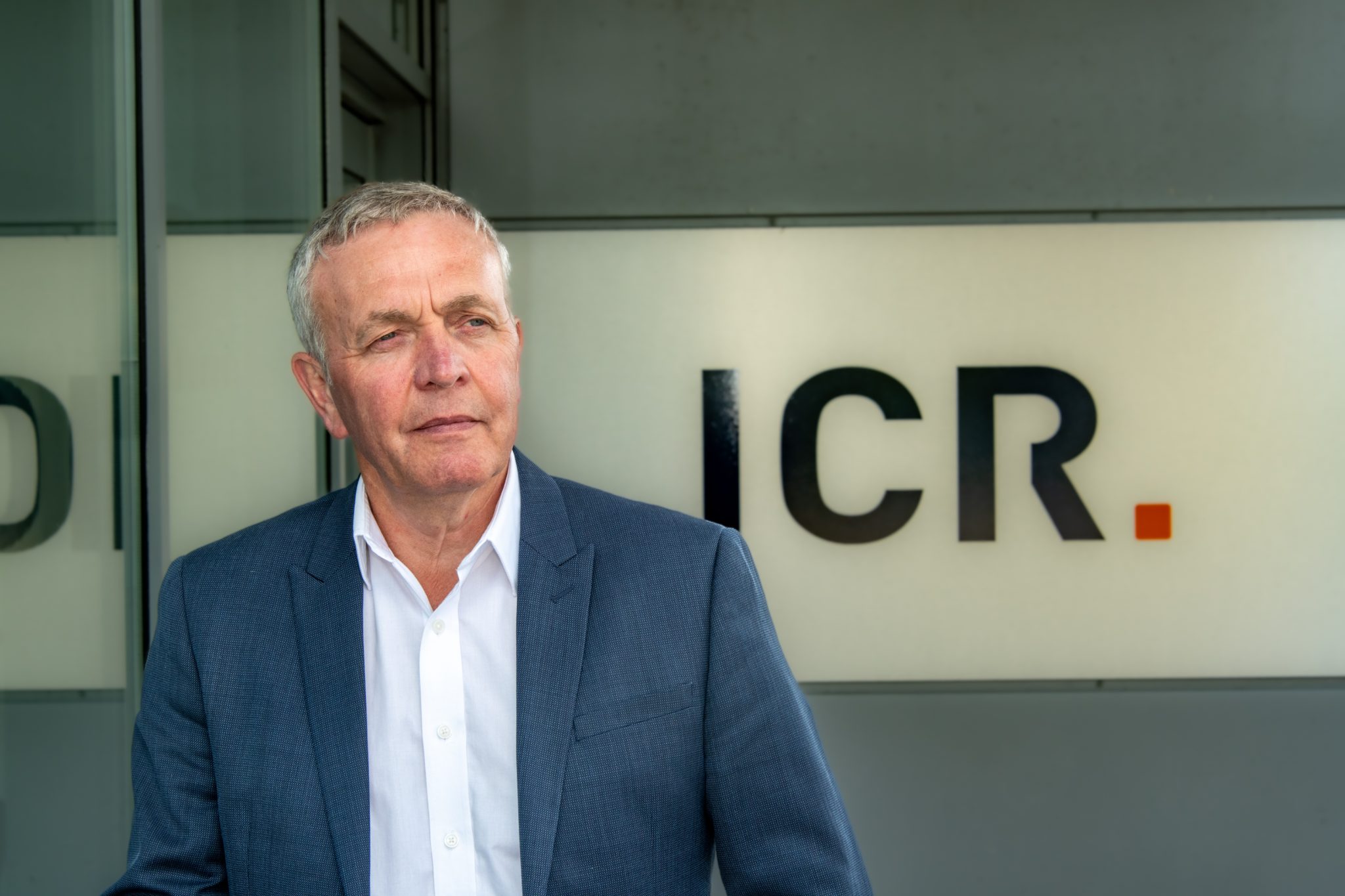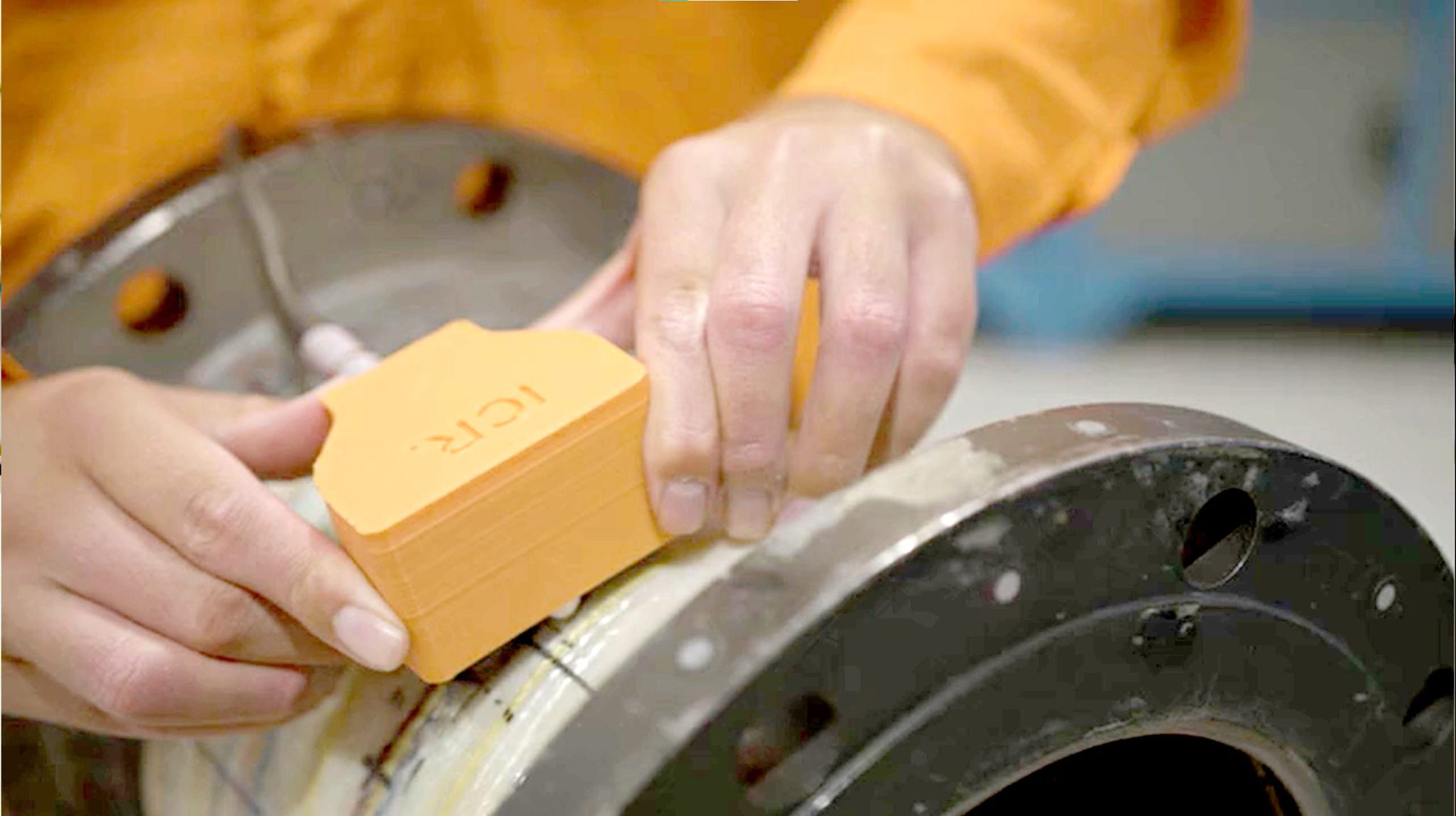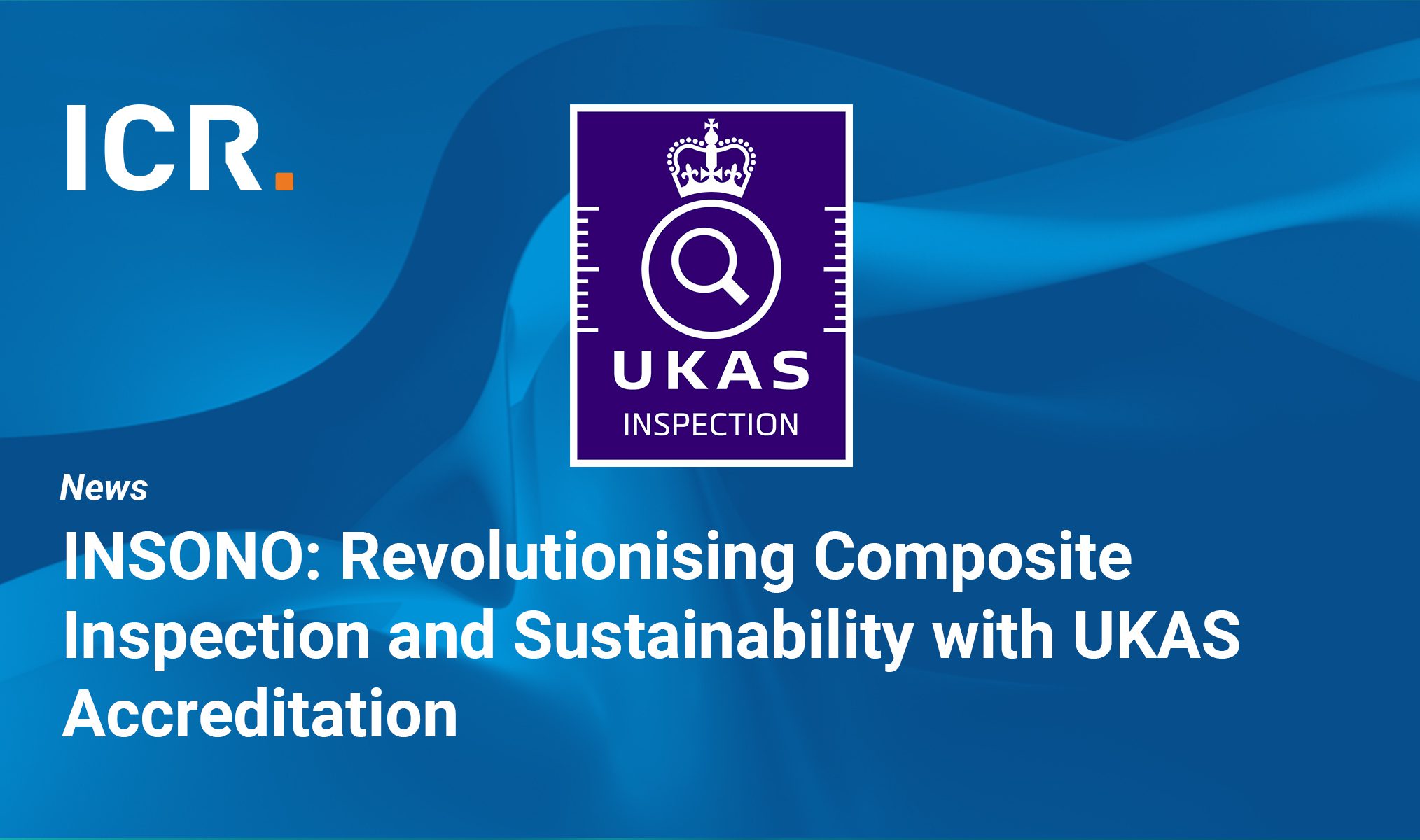The maintenance of offshore assets in 2023 and beyond – Mastering the cost/sustainability balance
By Espen Winsnes, Sales Manager at ICR
Maintaining offshore assets has always been complex business, but today across the North Sea in particular, ageing assets, cost restrictions, maintenance backlogs, skills shortages, and a growing need to protect the environment has exacerbated existing challenges.
Reflecting on ICR’s more than 30 years’ experience in the global oil and gas market, and over 50,000 completed projects, Espen Winsnes, ICR Sales Manager based in Norway, shares his views on the current trends impacting the maintenance of offshore assets in the North Sea, and the benefits of rapid, innovative maintenance solutions that can protect the future of operators’ investments.
Cost conundrums
According to global energy research analysts, Wood Mackenzie, as much as half of the North Sea’s 600 installations, were first installed 40 years ago. After four decades of operation, many of these ageing assets are due to be decommissioned at an estimated cost of £20billion over the next 25 years.
The cost of decommissioning an asset entirely, or replacing steel infrastructure such as offshore caissons and risers, is considerable. So, it is not surprising that operators are seeking to increase the economic life of their offshore assets, meaning many will remain in operation far longer than was anticipated when they were originally designed.
Here in Norway for example, despite one of the country’s oldest platforms, Statfjord A, being in use since 1979 and the rig due to be dismantled in 2022, Equinor decided in 2020 to extend its life span until 2027. Likewise, two other platforms in the same field, Statfjord B and C, which are of a similar age, have had their life extended until 2035.
Extending the life of an ageing offshore asset is not mandated by any one regulator and is instead a decision taken by the operator, so the burden to ensure their integrity falls on them. With a low global oil price and possibility of recession, these investments can come into question. Most operators today however understand the need to prioritise maintenance methods that will allow them to preserve their ageing offshore assets, whilst protecting the environment and being cost effective, and from our experience, there is good reason to do so.
Based on the more than 50,000 projects that we at ICR have delivered worldwide, and many of which took place in the Norwegian North Sea, we estimate that adopting world-class, innovative maintenance solutions instead of replacing key infrastructure on the asset can save an operator tens of millions of dollars each year.
The sustainability agenda
Of course, it is not always viable to extend the life of an ageing asset and there is no other option than to assess the infrastructure for recycling purposes. So today, operators are not only considering environmentally-friendly alternatives to make the day-to-day running of their assets more sustainable, some are considering the purpose of them entirely.
As the energy transition gathers pace, operators are routinely considering whether they can breathe new life into otherwise redundant assets. With global net zero targets fast approaching, the repurposing of offshore assets typically used in oil and gas activities is being considered a viable option to launch new clean energy projects in areas such as carbon capture storage, green hydrogen and offshore wind. This will create environmentally-friendly opportunities to recycle infrastructure such as heavy steel, and save precious time.
On paper this sounds like a smart plan however considering that North Sea offshore infrastructure is rapidly ageing and as a result, the integrity of the rigs’ infrastructure could be in question, it is not so simple. We know that more than 70% of the world’s oil is based in mature fields, and that North Sea assets in particular have outlived their initial lifecycle expectations, therefore great care and in-depth knowledge is required when repurposing these assets for clean energy pursuits to ensure long-term safety and efficiency.
By harnessing the more than five decades of global integrity management experience ICR has acquired, our world-class engineers and technicians are able to support the complex process of repurposing offshore assets for the energy transition.
For the operators extending the life of ageing platforms, such as Statfjord A, B and C in Norway, it is equally important that they consider the impact of their maintenance programmes on the environment including air quality and marine life. After all, the world’s eyes are firmly focused on how companies are acting responsibility and taking sustainable action across all of their operations.
At the end of March this year, the European Commission proposed a new EU Green Claims Directive which will set fresh requirements for companies making environmental claims about their products or services. These requirements will see increased pressure on companies across all sectors to demonstrate that they are acting responsibility when it comes to their impact on the environment.
The Directive will impact the oil and gas industry, but for the companies operating offshore, this has long been a point of contention as operators are already expected to take the necessary action to limit greenhouse gas (GHG) emissions, and take care over marine life.
In Norway for example, the Norwegian Environment Agency has applied the Pollution Control Act to the offshore industry which includes specific requirements on the protection of the natural environment, including monitoring the natural environment (including the effects on water column and seabed, limitations on discharges to air, and waste handling). Licensees are required to obtain a discharge permit before commencing exploration drilling, production activities and processing, which will set out pollution discharge limits and waste handling procedures.
It’s not only the regulator clamping down on bad behaviour that could negatively impact the planet. At the end of last year, the Norges Bank Investment Management, which manages a $1.3tn Norwegian oil fund and invests the country’s oil revenues, expressed intentions to vote against companies that fail to set a net zero emissions target having already set a target for Norwegian oil companies to hit net zero by 2050, further evidence that industry investors are becoming more aggressive on environmental, social and governance (ESG) issues.
Managing maintenance resource
Many operators today do understand the financial benefits of maintaining their assets, not to mention the regulatory requirements to do so, however the maintenance of ageing offshore oil and gas production facilities is far from straightforward and presents many challenges for operators.
One of the key issues mentioned is that many oil and gas assets have been in service for more than four decades, far longer than intended. This means maintenance programmes have been developed later in the life of the asset and require expert knowledge of the industry and the assets’ equipment to develop fit-for-purpose solutions.
Without access to this pool of knowledge, operators risk their maintenance programmes failing. In March this year, the UK Health and Safety Executive (HSE) issued a warning that maintenance backlogs on North Sea offshore installations that peaked following the pandemic have never returned to pre-COVID levels, a trend we see worldwide. One reason behind this is ageing installations and a loss of knowledge and competency, which the regulator claims has the risk of leading to a ‘major accident’ in 2023 or later.
For operators this is a caution that they cannot afford to ignore. As maintenance delays increase, so does the threat of danger to life and environmental damage, as well as heightened risk of shutdown time. Often smaller integrity issues worsen over time and become more at risk of a catastrophic incident so it is critical that repairs are conducted in a timely manner. Without experienced engineers on hand to survey and deliver pioneering maintenance solutions, another major incident could be on the horizon.
Furthermore, to successfully embrace the opportunities of the energy transition by re-using and maintaining existing oil and gas infrastructure, the right skills and experience are critical. As Norway’s Minister of Petroleum and Energy, Tina Bru, put it recently, “retaining expertise and technologies in the oil and gas sector is also vital for the development of new industries and technologies such as carbon capture and storage, offshore wind and hydrogen.”
At ICR, we understand the importance of quick responses to integrity issues, we pride ourselves on our ability to offer our customers rapid response solutions including on-the-ground experts, in-house surveys and the fast mobilisation of our best-in-class technicians and technologies. This allows us to reduce the average industry wait time of a project commencing from several months to just weeks. This time saving can significantly impact the long-term integrity of the asset, reducing the risk of further damage as the equipment or infrastructure awaits inspection and maintenance.
Rapid, innovative and sustainable solutions
The need for cost-effective and environmentally-friendly solutions that can be deployed at pace and scale by highly-skilled and experienced specialists has never been more important. Innovative technologies that aid more efficient, safer and sustainable operations are one way that we at ICR are achieving this for our customers.
Our suite of world-leading tools are not only cost-effective, but can be deployed with limited disruption to operations, reducing the need for downtime or asset shutdowns, as well as being low carbon alternatives to traditional methods. For example, caisson integrity can pose a major challenge on offshore platforms and is a maintenance issue that we support operators overcome frequently. Although a caisson is a relatively simple component of the platform, it can cause significant integrity issues if damage is left unrepaired, resulting in rising costs for the operator and the risk of the debris detaching and damaging the seabed and marine life.
For some operators, it might seem logical to replace a damaged caisson entirely but this will mean replacing the large steel part with a new one that has to be produced and transported, which results in unnecessary CO2 emissions. Furthermore, the installation of a new steel caisson part would warrant a potential rig shut down, specialist crews on site and the rental of maintenance ships, all at a considerable cost to the operator.
From our experience, a maintenance programme to repair caissons using the best-in-class technologies such as robotics is far more economical, efficient and sustainable, while reducing the challenges and safety hazards that on-site technicians would otherwise face. A robot for example can cover 10 times as much of the infrastructure in the same time as a human technician, performing around 70 percent of the work, allowing the technicians to avoid long periods performing rope access, focus on more complex and specialist work. There is also an environmental benefit, if the infrastructure features lead paint for example, then the robot can remove around 90 per cent of the paint preventing it from dropping into the ocean.
Another example is the use of ICR’s Technowrap™ repair solutions, proven to extend the life of a part up to 20 years, which can be equal to the lifetime of a brand new part if it was replaced entirely but that would lead to increased emissions.
Our studies have shown that by using this innovative repair solution, operators can benefit from significant emission reduction savings, helping to lower their own environmental footprint. For example, when using our repair system technology for the repair of a two metre section of 8” carbon steel pipework (85.1 kg) on an offshore rig, the system reduced emissions by 66% compared to the traditional methods.
Recently on a trial customer project, we deployed the Technowrap™ repair technology as part of our designed calculated engineer solution for the application of corrosion protection. The solution allowed the operator to extend the life of the subsea pipeline by up to 30 years, which is five to 10 years more than its standard lifetime design.
In Norway, we also supported a major operator correct wall defects as a result of excessive corrosion present on a 14” helideck drain line on a North Sea platform. Our engineered composite repair solution reinstated the integrity of the pipework for 20 years and was in accordance with the latest ISO standards.
Without these advanced technological solutions to aid efficient maintenance work, these operators may have chosen to replace the structures entirely leading to increased cost and emissions. The future of the oil and gas industry requires a more considered, greener alternative and we are proud of the role our proprietary technologies and engineers play in making that a reality.
You can read more about our successful cost saving and emission reducing projects here.
Featured articles

University of life stands Govan-raised engineer in good stead

LR and UKAS boost for ICR Group’s INSONO innovation


